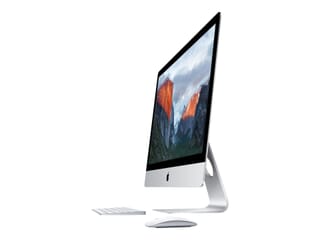Looking forward as Apple prepares to unveil the next generation of its groundbreaking silicon chips for MacBooks. Since the introduction of the M1 chip in late 2020, Apple has continued to push the boundaries of performance and energy efficiency. The upcoming release of the M4 in October 2024 promises to further revolutionise the computing experience. Here's what we can expect from the new generation of Apple Mac M4 chips.
Performance Boost
One of the most exciting aspects of the new Apple silicon is the anticipated performance boost. Early reports suggest that the next-generation chips, named the M4, will feature a significant increase in CPU and GPU cores having as a base case 4 performance cores and 6 efficiency cores. This enhancement is expected to deliver a substantial uplift in processing power, making tasks such as video editing, 3D rendering, and software development faster and more efficient than ever before.
The New MacBook Pro models will have the new M4 chip as standard in the core with the new technical phrase of the (SOC) system on a chip. It's unlikely there will be any cosmetic differences in design as the current models. The main change will be under the hood with the new M4 chip improving performance for AI functionality and faster graphics rendering
The M1 series already set a high bar with its 8-core CPU and up to 8-core GPU in the base models, and even more in the M1 Pro, M1 Max, and M1 Ultra variants. The new chips could potentially treble the core count, leveraging advanced manufacturing processes like TSMC’s 3nm technology. This would not only boost performance but also improve energy efficiency, leading to longer battery life.
Apple has said that the M4 chip in the upcoming MacBook Pro will feature the fastest 16-Core neural engine ever, capable of 38 trillion operations per second, and will be faster than any AI PC we have today.
New AI facilities are faster and more powerful.
MacBook M4 will have the same designs we have in the M3 versions, featuring the base-level 14-inch and higher-end 14-inch and 16-inch screen models. The models are likely to feature the standard M4, M4 Pro, and M4 Max chips, respectively. All other aspects such as cameras ports etc will be the same as the M3 units.
Improved Energy Efficiency
Energy efficiency has been a hallmark of Apple silicon, allowing MacBooks to offer impressive battery life without compromising on performance and heat generation. The upcoming chips are expected to take this further, thanks to improvements in architecture and fabrication technology. The shift to a smaller nanometer process (from 5nm to 3nm) is likely to result in lower power consumption and reduced heat generation.
This means users can expect their MacBooks to last even longer on a single charge, making them ideal for on-the-go professionals and students. The efficient design will also contribute to quieter operation, as the need for active cooling will be minimised.
Enhanced Machine Learning Capabilities
Apple has placed a strong emphasis on machine learning (ML) capabilities with its silicon chips, and the new generation is expected to continue this trend with 28 billion transistors that’s 3 billion more than the M3 chip. Enhanced neural engines with more cores and improved algorithms will enable faster and more accurate ML computations being able to do 38 trillion operations per second. This will benefit a wide range of applications, from photo and video editing to predictive text and advanced analytics.
Developers will also gain from these improvements, as they can leverage the increased ML capabilities for more complex and innovative apps. This opens up new possibilities for AI-driven software that can run efficiently on a MacBook.
The upcoming new generation of Apple Mac chips promises to bring substantial improvements in performance, energy efficiency, machine learning, graphics capabilities, and connectivity. As Apple continues to innovate and refine its silicon technology, users can look forward to a computing experience that is faster, more efficient, and more versatile than ever before.
-24125.png)






















